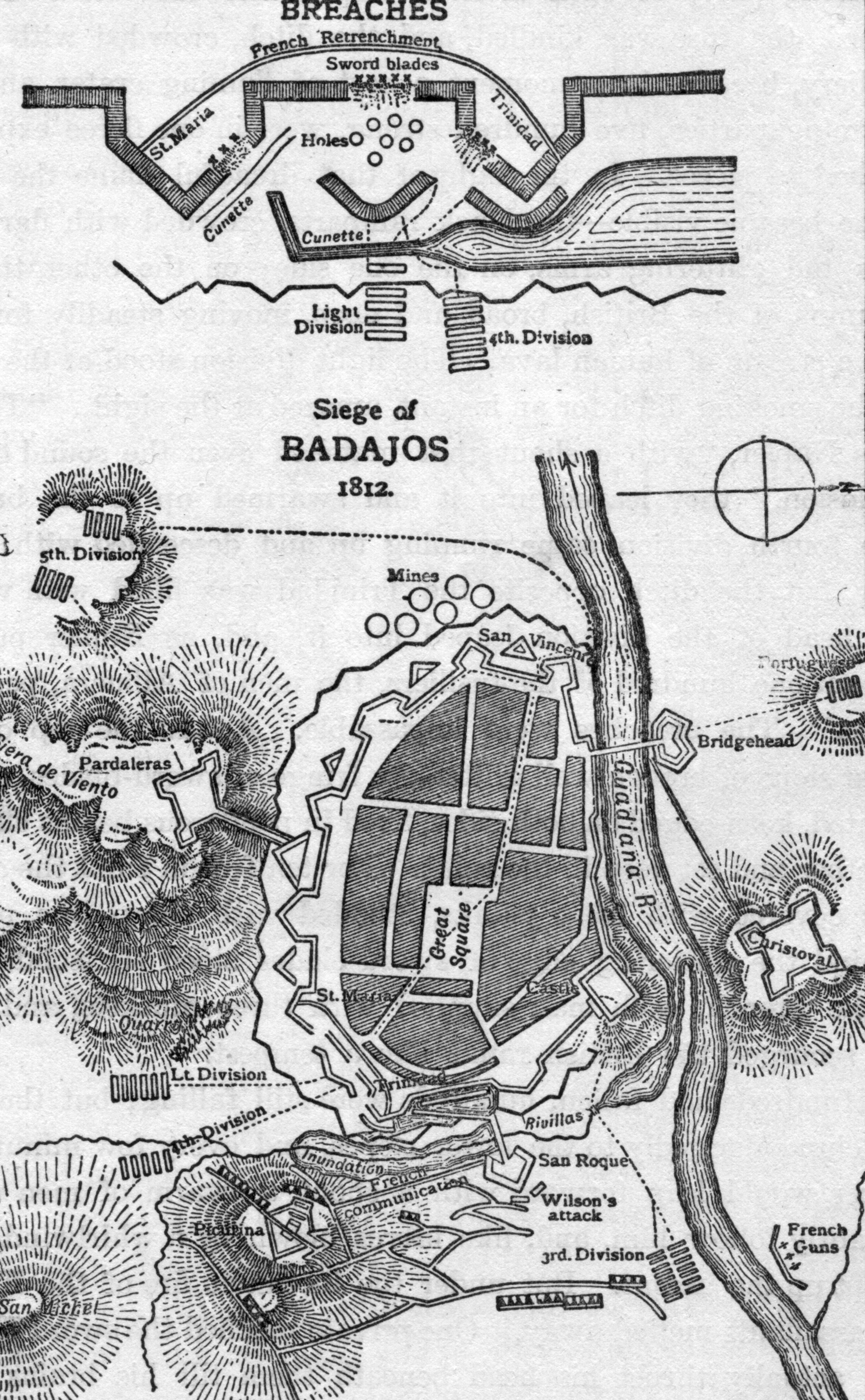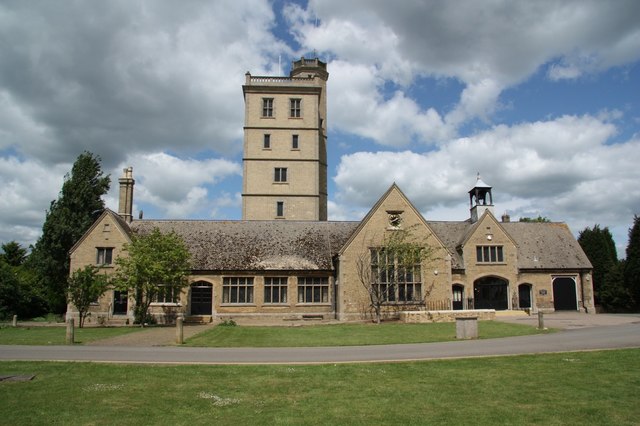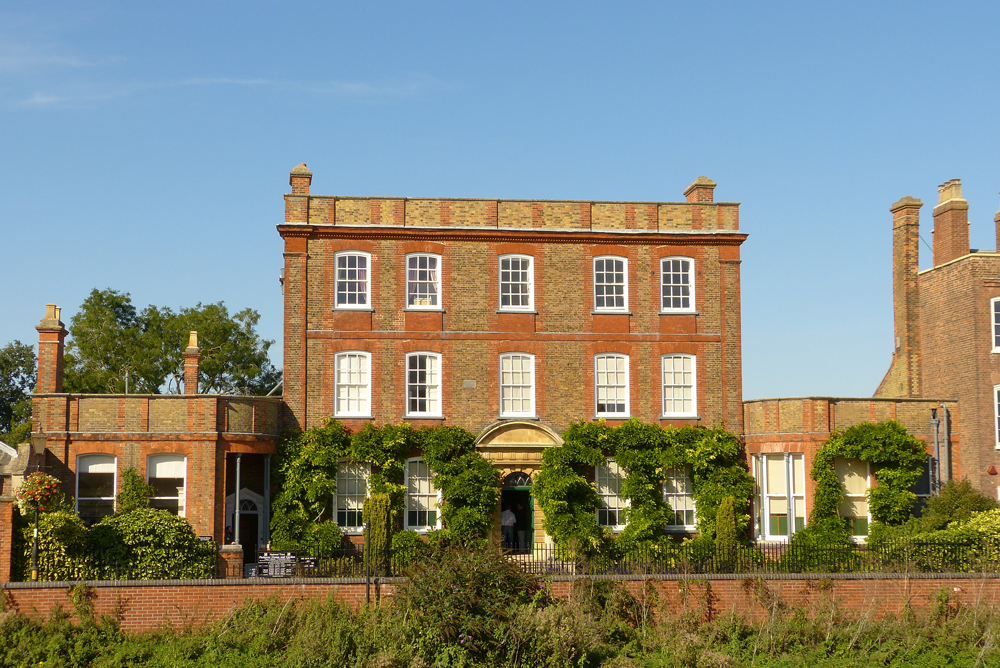|
Sir Harry Smith
Lieutenant-General Sir Henry George Wakelyn Smith, 1st Baronet, GCB (28 June 1787 – 12 October 1860) was a notable English soldier and military commander in the British Army of the early 19th century. A veteran of the Napoleonic Wars, he is also particularly remembered for his role in the Battle of Aliwal, India in 1846, his subsequent governorship of the Cape Colony, and as the husband of Lady Smith. Biography He was born in Whittlesey, Isle of Ely, Cambridgeshire, the son of a surgeon and major in the Wisbech, Whittlesey and Thorney United Battalion. The east end of the south aisle of St. Mary’s church was at this time partitioned off and used as a schoolroom, the vicar or curate teaching. It was here that Harry Smith received his education from the Rev. George Burgess, then curate. During a review of the unit by General Stewart, he got into conversation with the youth and offered to procure him a commission. A short time later a commission as a second lieutenant wi ... [...More Info...] [...Related Items...] OR: [Wikipedia] [Google] [Baidu] |
|
 |
Whittlesey
Whittlesey (also Whittlesea) is a market town and civil parish in the Fenland District, Fenland district of Cambridgeshire, England. Whittlesey is east of Peterborough. The population of the parish was 17,667 at the 2021 Census. Toponymy Whittlesey appears in the ''Cartularium Saxonicum'' (973 CE) as 'Witlesig', in the 1086 ''Domesday Book'' as 'Witesie', and in the ''Inquisitio Eliensis''. The meaning is "Wit(t)el's island", deriving from either Witil, "the name of a moneyer", or a diminutive of Witta, a personal name; + "eg", meaning "'island', also used of a piece of firm land in a fen." The official name of the civil parish is 'Whittlesey', which spelling is also used by the Royal Mail and Ordnance Survey. The Whittlesea railway station, town's railway station uses the alternative spelling of 'Whittlesea'. History Before the fens were drained, Whittlesey was an island of dry ground surrounded by them. Excavations of nearby Flag Fen indicate thriving local settlements ... [...More Info...] [...Related Items...] OR: [Wikipedia] [Google] [Baidu] |
|
Juana María De Los Dolores De León Smith
Juana María de los Dolores de León, Lady Smith (27 March 1798 – 12 October 1872), was the wife of General Sir Harry Smith, Governor of the Cape Colony. Biography Born into an old Spanish noble family, she was a descendant of Juan Ponce de León. In 1812, at the age of 14, she found herself orphaned and only with a sister, when her home town Badajoz was besieged for the fourth time during the Peninsular War. After the siege ended in a successful but very bloody storming by the British and Portuguese forces, the sisters sought protection from the chaos of the siege, and chanced upon some British Army officers they found camping outside the city walls. One of them was the then Captain Harry Smith, of the 95th Rifles Regiment, whom she married a few days later. Instead of letting herself be sent home to her husband's family, she chose to accompany him with the army. She remained with him throughout the rest of the war, accompanying the baggage train, sleeping in the open ... [...More Info...] [...Related Items...] OR: [Wikipedia] [Google] [Baidu] |
|
 |
Battle Of Badajoz (1812)
In the siege of Badajoz (16 March – 6 April 1812), also called the third siege of Badajoz, an Anglo-Portuguese Army under the command of the Arthur Wellesley, the Earl of Wellington (who was later made Duke of Wellington) besieged Badajoz, Spain, and forced the surrender of the French garrison. The siege was one of the bloodiest in the Napoleonic Wars and was considered a costly victory by the British, with some 4,800 Allied soldiers killed or wounded in a few short hours of intense fighting during the storming of the breaches as the siege drew to an end. Enraged at the huge number of casualties they suffered in seizing the city, the troops broke into houses and stores consuming vast quantities of alcohol with many of them then going on a rampage, threatening their officers and ignoring their commands to desist, and even killing several. It took three days before the men were brought back into order. When order was restored, an estimated 200–300 civilians had been ki ... [...More Info...] [...Related Items...] OR: [Wikipedia] [Google] [Baidu] |
|
Thomas Sydney Beckwith
Lieutenant-General Sir Thomas Sydney Beckwith (17 February 177015 January 1831) was a British Army officer who served as quartermaster general of the British forces in Canada during the War of 1812, and a commander-in-chief of the Bombay Army during the British Raj.Stephens, H. M. (2004)Beckwith, Sir Thomas Sydney (1772–1831) rev. Roger T. Stearn, ''Oxford Dictionary of National Biography'', Oxford University Press. He is most notable for his distinguished service during the Peninsular War and for his contributions to the development and command of the 95th Rifles. Family His father was Major General John Beckwith, who commanded the 20th Regiment of Foot. His brothers were Captain John Beckwith, Sir George Beckwith and Brigadier General Ferdinand Beckwith. He was also the uncle of Major-General John Charles Beckwith. He entered the Army himself in 1791, joining the 71st (Highland) Regiment of Foot, and served with them in India. In 1817, he married Lady Mary Douglas, eld ... [...More Info...] [...Related Items...] OR: [Wikipedia] [Google] [Baidu] |
|
 |
Battle Of Toulouse (1814)
A battle is an occurrence of combat in warfare between opposing military units of any number or size. A war usually consists of multiple battles. In general, a battle is a military engagement that is well defined in duration, area, and force commitment. An engagement with only limited commitment between the forces and without decisive results is sometimes called a skirmish. The word "battle" can also be used infrequently to refer to an entire operational campaign, although this usage greatly diverges from its conventional or customary meaning. Generally, the word "battle" is used for such campaigns if referring to a protracted combat encounter in which either one or both of the combatants had the same methods, resources, and strategic objectives throughout the encounter. Some prominent examples of this would be the Battle of the Atlantic, Battle of Britain, and the Battle of France, all in World War II. Wars and military campaigns are guided by military strategy, wh ... [...More Info...] [...Related Items...] OR: [Wikipedia] [Google] [Baidu] |
 |
Rifle Brigade (Prince Consort's Own)
The Rifle Brigade (The Prince Consort's Own) was an infantry rifle regiment of the British Army formed in January 1800 as the "Experimental Corps of Riflemen" to provide sharpshooters, scouts, and skirmishers. They were soon renamed the "Rifle Corps". In January 1803, they became an established regular regiment and were titled the 95th Regiment of Foot (Rifles). In 1816, at the end of the Napoleonic Wars, they were again renamed, this time as the "Rifle Brigade". The unit was distinguished by its use of green uniforms in place of the traditional red coat. It also differed in being armed with the Baker rifle in place of smooth-bore muskets. The Rifle Brigade performed distinguished service in both the First and Second World Wars. Post war, in 1958 the regiment formed part of the Green Jackets Brigade as 3rd Green Jackets and was amalgamated with the 1st Green Jackets (43rd and 52nd) and the 2nd Green Jackets (King's Royal Rifle Corps) to form the Royal Green Jackets on 1 Ja ... [...More Info...] [...Related Items...] OR: [Wikipedia] [Google] [Baidu] |
|
Peninsular War
The Peninsular War (1808–1814) was fought in the Iberian Peninsula by Kingdom of Portugal, Portugal, Spain and the United Kingdom of Great Britain and Ireland, United Kingdom against the invading and occupying forces of the First French Empire during the Napoleonic Wars. In Spain, it is considered to overlap with the Spanish War of Independence. The war can be said to have started when the First French Empire, French and History of Spain (1808–1874), Spanish armies Invasion of Portugal (1807), invaded and occupied Portugal in 1807 by transiting through Kingdom of Spain (1810-1873), Spain, but it escalated in 1808 after First French Empire, Napoleonic France occupied History of Spain (1808–1874), Spain, which had been its ally. Napoleon Bonaparte Abdications of Bayonne, forced the abdications of Ferdinand VII of Spain, Ferdinand VII and his father Charles IV of Spain, Charles IV and then installed his brother Joseph Bonaparte on the Spanish throne and promulgated the ... [...More Info...] [...Related Items...] OR: [Wikipedia] [Google] [Baidu] |
|
 |
Battle Of Montevideo (1807)
The Battle of Montevideo took place between the British and Spanish Empires during the Napoleonic Wars, in which British forces captured the city of Montevideo. It formed part of the British invasions of the River Plate. Locally, it is remembered as the siege of Montevideo (). Prelude In the early morning of 3 February 1807, 3,000 British troops under Brigadier General Sir Samuel Auchmuty attacked the city of Montevideo. The city's capture was preceded, on 20 January, by an action outside the town, the Battle of El Cristo del Cardal (or Battle of Cardal), in which the 60th Rifles and the 95th Foot (later the Rifle Brigade), especially distinguished itself by an outflanking movement which turned the tide of the battle in favour of the British. About 800 local combatants, mostly non-professional soldiers, became casualties, of whom about 200 were killed. Total British casualties were about 70 killed and wounded. Assault Montevideo was put under siege from that date and its ca ... [...More Info...] [...Related Items...] OR: [Wikipedia] [Google] [Baidu] |
|
British Invasions Of The Río De La Plata
The British invasions of the River Plate were two unsuccessful British attempts to seize control of the Spanish colony of the Viceroyalty of the Río de la Plata, located around the Río de la Plata in South America – in present-day Argentina and Uruguay. The invasions took place between 1806 and 1807, as part of the Napoleonic Wars, War of the Third Coalition at a time when Spain was an ally of Napoleonic France. In Argentine historiography, the two successive defeats of the British expeditionary forces are known collectively as the "Reconquista" and the "Defensa", respectively. Overview The invasions occurred in two phases. A detachment from the British army occupied Buenos Aires for 46 days in 1806 before being expelled. In 1807, a second force stormed and occupied Montevideo, remaining for several months, and a third force made a second attempt to take Buenos Aires. After several days of street fighting against the local militia and Spanish colonial army, in which ha ... [...More Info...] [...Related Items...] OR: [Wikipedia] [Google] [Baidu] |
|
 |
Thorney, Cambridgeshire
Thorney is a village in the Peterborough unitary authority in the ceremonial county of Cambridgeshire, England. Located around east of Peterborough city centre, on the A47. Historically in the Isle of Ely, Thorney was transferred to the short-lived county of Huntingdon and Peterborough in 1965 and became part of the Peterborough district in 1974, on the merger into Cambridgeshire; the city became a unitary authority area in 1998. History Thorney began as a Saxon settlement in about 500 AD. The existence of Thorney Abbey made the settlement an important ecclesiastical centre, and until 2014 was the most northerly point of the Anglican Diocese of Ely. By 2007 the previous Thorney Abbey church, now the Church of St Mary and St Botolph, was part of the Deanery and Diocese of Peterborough. Following the Dissolution of the Monasteries the estate became crown property and it was granted to John Russell, 1st Earl of Bedford in 1550. At this time only a few hundred acres of the l ... [...More Info...] [...Related Items...] OR: [Wikipedia] [Google] [Baidu] |
 |
Wisbech
Wisbech ( ) is a market town, inland port and civil parish in the Fenland District, Fenland district in Cambridgeshire, England. In 2011 it had a population of 31,573. The town lies in the far north-east of Cambridgeshire, bordering Norfolk and only 5 miles (8 km) south of Lincolnshire. The tidal River Nene running through the town is spanned by two road bridges. Wisbech is in the Isle of Ely (a former administrative county) and has been described as "the Capital of The Fens". Wisbech is noteworthy for its fine examples of Georgian architecture, particularly the parade of houses along the North Brink, which includes the National Trust property of Peckover House and Garden, Peckover House and the The Crescent, Wisbech, Crescent, part of a crescent (architecture), circus surrounding Wisbech Castle. History Toponymy The place name "Wisbech" is first attested in the ''Anglo-Saxon Chronicle'' for the year 656, where it appears as ''Wisbeach''. It is recorded in the 1086 Do ... [...More Info...] [...Related Items...] OR: [Wikipedia] [Google] [Baidu] |
|
Isle Of Ely
The Isle of Ely () is a historic region around the city of Ely, Cambridgeshire, Ely in Cambridgeshire, England. Between 1889 and 1965, it formed an Administrative counties of England, administrative county. Etymology Its name has been said to mean "island of eels", a reference to the fish that were often caught in the local rivers for food. This etymology was first recorded by the Venerable Bede. History Until the 17th century, the area was an island surrounded by a large area of The Fens, fenland, a type of swamp. It was coveted as an area easy to defend, and was controlled in the very early medieval period by the Gyrwas, an Anglo-Saxon tribe. Upon their marriage in 652, Tondbert, a prince of the Gyrwas, presented Æthelthryth (who became St. Æthelthryth), the daughter of King Anna of East Anglia, Anna of the East Angles, with the Isle of Ely. She afterwards founded a monastery at Ely, which was destroyed by Viking raiders in 870, but was rebuilt and became a famous Ely Cat ... [...More Info...] [...Related Items...] OR: [Wikipedia] [Google] [Baidu] |